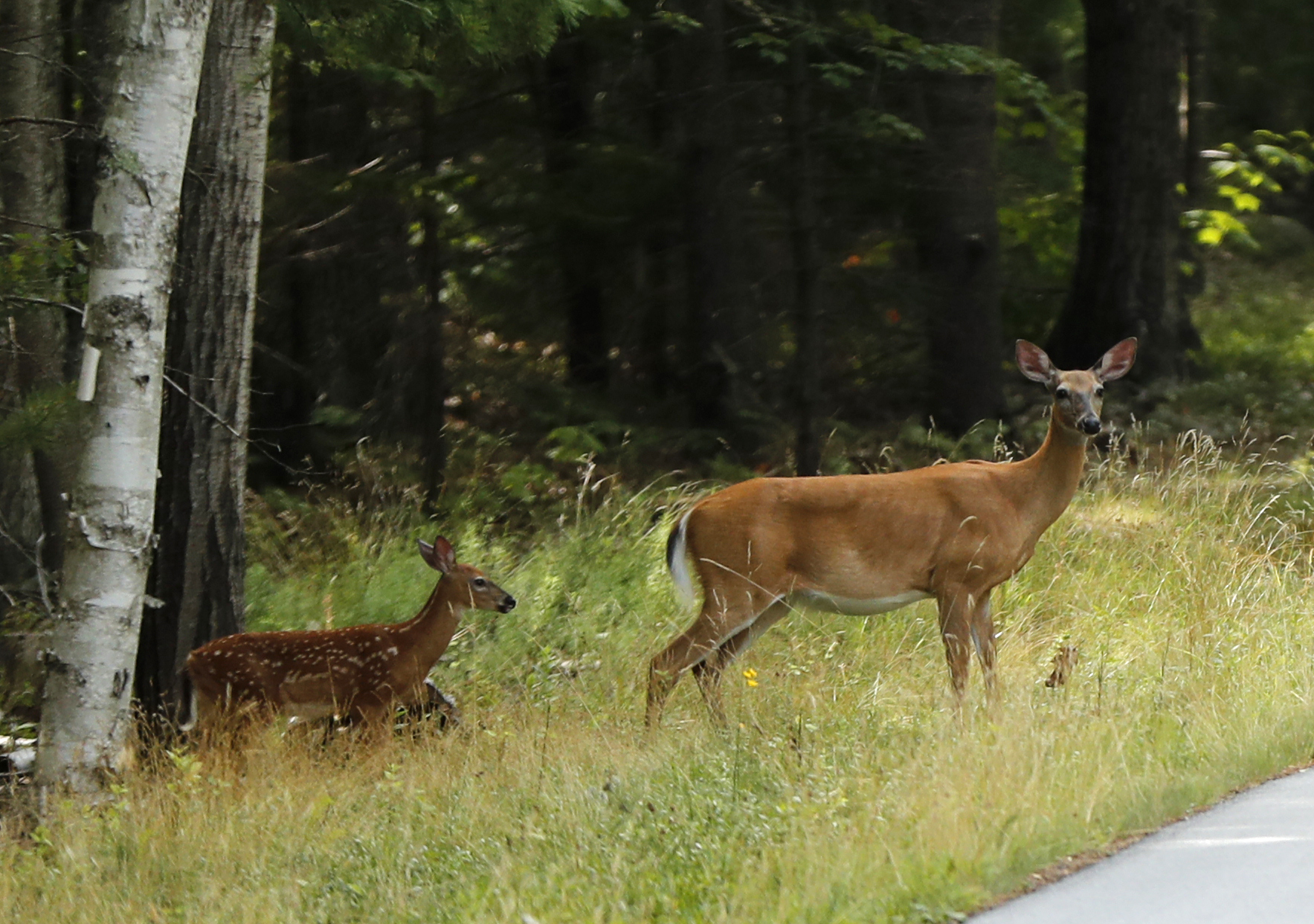Commentary by Dr. Dave Samuel
Hunters are obsessed with coyotes. If we don’t see deer, we blame coyotes. If the deer kill is down, we blame coyotes. If we’re out hunting and we see a coyote, but no deer, we blame coyotes for the lack of deer sightings. I know that coyotes do kill some fawns, and several studies show that about 10% of all fawn mortality is caused by coyotes, but are they a big problem for deer?
In West Virginia, we’ve seen a decline in deer numbers and an increase in coyote numbers. To then conclude that coyotes are why we have a deer decline is a mistake. First, the deer decline is partly due to high antlerless harvests, planned by the DNR because habitat is being hammered. Second, timbering is down. For deer, ruffed grouse and a myriad of songbirds, we have way too much mature forests, on federal, state and private lands. Will we see a significant increase in timbering in the next 20 years? Probably not enough to make a difference.
As mentioned, coyote numbers have increased over the last 30 years. Even though some hunters ignore scientific data, I don’t. Rather than base things on anecdotal observations, let’s look at real data and see if coyotes control deer numbers.
The most unique new study on the impacts of predators on deer fawns was done by researchers at the University of Delaware. Here’s why this study was so unique. They had a large area in Sussex County (the southern part of Delaware) that had 50 deer per square mile, no confirmed sightings of bobcats, no sightings of black bear and almost no coyotes. They ran various predator surveys and deployed trail cameras and recorded only one coyote. Data from coyote hunting seasons that started in 2014 showed only nine coyotes were harvested in that area. Thus, the area was not totally free of coyotes, but there were very few.
They then captured 109 fawns over a two-year period. All fawns were radio-collared so that when a fawn died, they would find it right away.
In all fawn mortality studies, most of the mortality occurs the first month. That was true for this study, too, because 39% of the fawns were dead within 30 days. No predators and still 39% were dead one month after birth. Even more interesting is that 50% of those that died did so in the first seven days. But if a fawn makes it past the first month, survival isn’t bad. In this study, 54% of the fawns were alive after three months.
These survival rates compare to fawn mortality studies from other eastern states (where there were coyotes, bears, bobcats, etc.). Considering that there was no predator-caused mortality in the Delaware study, you would think that survival rates would be higher. Even in the absence of predators, lots of fawns were still dying. If none were eaten by predators, how did they die? The answer is some starved, others died from bacterial infections, some died from pneumonia and some drowned.
The authors of the Delaware study said, “Our findings suggest that predators may simply be removing the doomed surplus” — the individuals that would have died regardless of predator intervention. For example, if a predator kills a fawn that is dying of pneumonia, the event is recorded as predation because we have no way of knowing the animal was sick before it was eaten. This scenario might explain why many studies have found predation to be the most important cause of mortality, as well as why some predator management efforts have been largely unsuccessful.
I’ve never given much thought to the fact rain might kill fawns, but it apparently does. In this Delaware study, one inch of rain a day doubled mortality. Wow. Even small amounts of rain in June can kill fawns.
The authors concluded predation might be less of a limiting factor than we once believed. If predators don’t kill the fawns, a certain percentage will die anyway from other factors. If predators kill fawns, these other factors don’t take as many.
So, hunters can kill coyotes, but in most places, the end result will be about the same. Deer numbers won’t change. A study in the Southeast showed that one-third of all adult coyotes are transient. They found that transients moved around trying to find an area that had fewer coyotes and thus, more food. If an adult resident coyote was trapped or shot, a transient would move in quickly, and thus, adult coyote numbers didn’t change.
So where does all this leave us? We know that at least in Delaware, with no coyote predation in an area, lots of fawns still die from other natural causes. Maybe predators would lead to less natural mortality. Maybe not.
We also know that in some deer states such as Ohio and Pennsylvania, coyote’s cause about 10% of fawn mortality. Bears also cause about 10%, and bobcats another 8% or so. My guess is this is probably close to what happens in West Virginia, too. Whether our coyote numbers will go up and eventually lead to an increase in fawn mortality is still unknown. It would be nice if we had a research study looking at this.
Yes, the coyote/deer situation is a fluid, changing one that seems to vary from one area to another. There are lots of variables, and the need for on-going data collection. My thoughts on coyotes are pretty basic. I see the chronic wasting disease problem as far bigger than the present coyote problem. For that reason, you’ll read more about CWD in future columns.
Dr. Samuel is a retired wildlife professor from West Virginia University. His outdoor columns have appeared, and continue to appear, in Bowhunter magazine and the Whitetail Journal. If you have questions or comments on wildlife and conservation issues, email him at drdave4@comcast.net.




